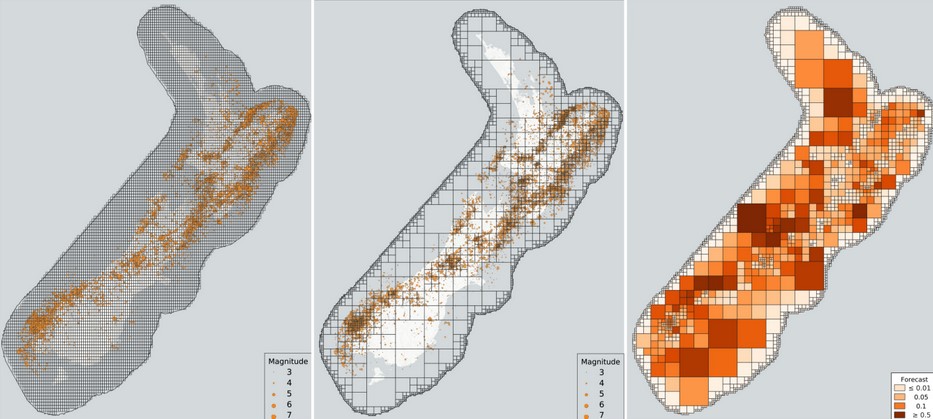News release
From:
New Features in the pyCSEP Toolkit for Earthquake Forecast Development and Evaluation
An international team of 12 researchers across six institutions have recently made valuable enhancements to PyCSEP; a quintessential open-source software package used to develop and evaluate earthquake forecasting experiments.
GNS Science Statistical Seismologist Dr. Kenny Graham, lead author of the paper published in Seismological Research Letters, highlights that these improvements greatly enhance the ability of earthquake forecasters to assess detailed, region-specific seismic forecasts through advanced statistical functions.
"Using New Zealand as a primary case study, we tested the upgraded PyCSEP codebase to project long-term seismicity estimates from a global model onto a specific geographical region. This new feature provides valuable insight into the predictive skills and comparative performance of global models on a regional scale," says Dr. Graham.
Dr. Graham is a key member of the Collaboratory for the Study of Earthquake Predictability (CSEP), which is committed to advancing earthquake predictability research through rigorous testing of probabilistic earthquake forecasts. The PyCSEP toolkit offers a suite of statistical tests that allow researchers to rigorously assess a model's performance against observed earthquakes. The tool provides a rigorous, community-accepted rule set for how earthquake forecasts should be evaluated.
"These advancements represent a significant step forward in the standardization and comparability of earthquake forecast models globally," adds Dr. Graham. "The results from this case study demonstrate the practical application of these developments and underscore the robustness of the enhanced PyCSEP software package. It provides governments and researchers with greater confidence in the validity of their earthquake forecasts, which is crucial for long-term planning and preparedness to increase resilience against the devastating effects of earthquakes."
The new PyCSEP features include:
- access to authoritative earthquake catalogs from Italy (Bolletino Seismico Italiano), New Zealand (GeoNet), and the world (Global Centroid Moment Tensor),
- the creation of multi-resolution spatial forecast grids,
- the adoption of non-Poissonian testing methods,
- applying a global seismicity model to specific regions for benchmarking regional models, and
- evaluating alarm-based models.



 New Zealand; International
New Zealand; International



